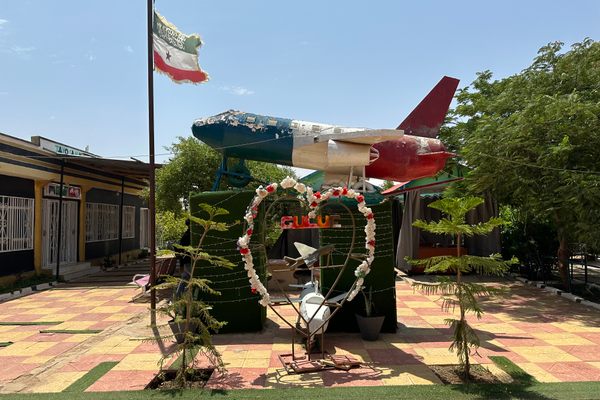AO Edited
Hargeysa Cultural Center's Tape Wall
An extensive audio-only collection of cultural heritage saved from a genocide.
For the vast majority of Somali history, a massive body of cultural heritage was preserved only orally. It was not that Somali society had never developed writing; archeological work has uncovered ancient stone inscriptions spanning thousands of years. The written word was just not a popular invention, seemingly ill-suited for a historically nomadic people. Thus countless thousands of stories, songs, and poems were passed down orally across centuries, often verbatim, and never written down.
Poetry was especially culturally important. After visiting the area that would become Somaliland, Richard Francis Burton wrote in 1856 that “the country teems with poets…every man has his recognized position in literature as accurately defined as though he had been reviewed in a century of magazines”. In the 20th century, Somalia would become known as a “nation of poets.” Poetry was the primary medium for not only historical records but also political debates and mass communication. Poems had literally started wars, brokered peace, and toppled governments.
Profoundly unfortunate change has taken place since then. Somali scholar Said Sheikh Samatar wrote in 2010 that the nation’s poetic soul had “gone dormant, if it has not altogether disappeared.” While earlier, in 1982, Samatar had described poetry’s “pervasive force in Somali society,” he would eventually lament that Somalia had been “replaced by another, a barren Somalia … scraped to the bone from any aesthetic sensibility.” The late 1980s saw the start of civil war and genocide from which Somali society at large has yet to recover. While heritage is almost always a casualty of war, oral history and tradition is the most vulnerable; Unlike physical records, it cannot be indefinitely preserved if left unused.
In the period before the government’s collapse, an invention iconic of its era and perfectly suited to oral tradition became ubiquitous in Somalia: the cassette tape. People recorded songs, poems, plays, and messages to loved ones. The recorded word seemed to transform Somali society faster and more thoroughly than the written word ever had, and the 1970s became a golden age for Somali music and the arts. When the Isaaq genocide began in the late 1980s, and 90 percent of the city of Hargeysa was destroyed, people smuggled cassette tapes out or buried them underground in an attempt to preserve culture. Several caches of buried music archives have yet to be found, their exact locations remain lost.
The Hargeysa Cultural Center has done immense work in tracking down, collecting, and digitizing this formerly scattered treasure of history and heritage. A wall of thousands of tapes can be seen on display, each one a survivor of genocide. These are only a fraction of the tens of thousands of tapes they have in their growing archive. The process of listening to and categorizing the tapes is ongoing, but the collection has already been used for two PhD theses. One poet who heard an old recording of hers for the first time in many years began to cry, saying she had forgotten this piece, and that it would have been lost forever had the recording not been found.
Having lamented the seeming demise of the Somali poetic tradition, Samatar died in 2015, shortly after the opening of the Cultural Center. Since then, amidst increasing activism and preservation, combined with ongoing stability in much of now-independent Somaliland, the poetic tradition has begun returning. In 2017, a Somaliland poet with the moniker Weedhsame uploaded to Facebook a recording of his new original poem criticizing the Somaliland government for corruption. It went locally viral, inspiring a chain of response and debate poems in the same style, a deeply Somali cultural event happening for the first time in decades.
While the future of Somaliland and Somalia may not be certain, the wall of cassette tapes is a success story of human beings preserving who they are and where they came from, even through the worst possible adversity.
Know Before You Go
The center is open six days a week and closed Friday. Normal hours are 8:30 a.m. to 5 p.m., but frequent events mean the center is often open until 9 p.m. A small museum in the back contains the cassette tape wall, along with some other Somalilander artifacts and pieces of art.















Follow us on Twitter to get the latest on the world's hidden wonders.
Like us on Facebook to get the latest on the world's hidden wonders.
Follow us on Twitter Like us on Facebook